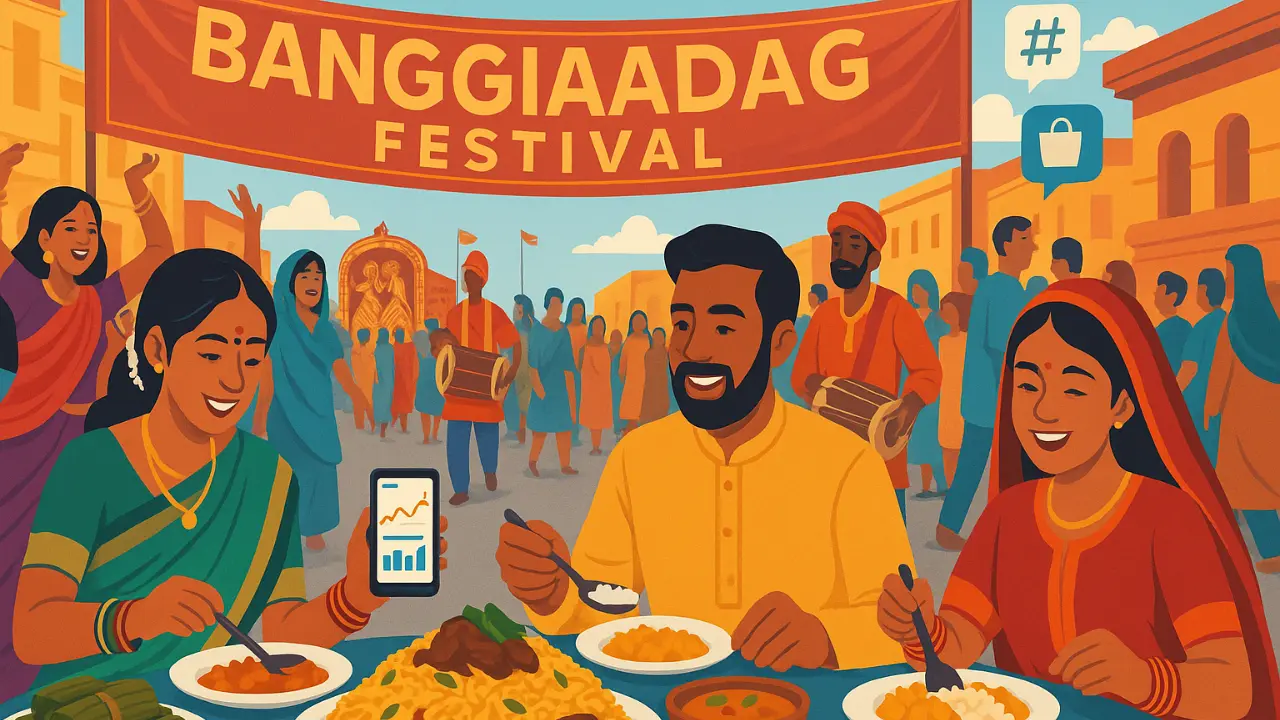Banggiadag: A Celebration of Heritage and Seasons
Introduction to Banggiadag
Banggiadag is a traditional cultural festival that reflects the deep relationship between communities, their ancestral roots, and the land they inhabit. It is not merely a gathering for entertainment, but a meaningful occasion that ties together history, seasonal changes, and the values passed down through generations. Every year, families and neighbors come together to honor traditions, exchange stories, and participate in rituals that have been shaped over centuries.
Although the details of the celebration can vary from place to place, the central theme remains consistent: a shared respect for nature’s cycles and the wisdom of those who came before.
Historical Roots of Banggiadag
The origins of banggiadag trace back to early agricultural societies. These communities depended heavily on seasonal patterns to guide planting and harvesting. To mark important changes in the year—such as the end of one season and the beginning of another—people created ceremonies that expressed gratitude for abundance and asked for blessings for the future. Over time, these ceremonies became more organized and transformed into the festival now known as banggiadag.
Elders often speak of how the earliest banggiadag gatherings were small and centered around family fields. Over centuries, they grew into community-wide celebrations, attracting visitors from neighboring areas. This gradual expansion helped preserve the customs while also allowing them to evolve.
The Meaning Behind the Name
The term “banggiadag” is often linked to the concepts of unity and renewal. In some interpretations, the word combines elements that refer to “togetherness” and “the turning of time.” This linguistic link reflects the dual purpose of the festival: to strengthen bonds between people and to acknowledge the ever-changing rhythm of life.
The name itself acts as a reminder that no matter how much time passes, traditions can remain alive as long as they are nurtured and respected.
Preparations for the Festival
Preparations for banggiadag begin weeks in advance. Households clean and repair their homes, symbolizing a fresh start. Farmers tend to their fields, ensuring they are ready for the coming season. Artisans craft decorations using materials found in nature, such as woven leaves, dried flowers, and carved wood.
One important aspect of preparation is the making of traditional garments. Families often wear clothing in colors that represent the season being honored. For example, earthy tones might be chosen for autumn celebrations, while bright greens and yellows could be used in springtime. These outfits are not just for appearance—they carry symbolic meaning, linking the wearer to the theme of the event.
Key Rituals and Activities
Banggiadag is marked by several key rituals, each with its own symbolism.
Opening Ceremony
The festival usually begins with an opening ceremony led by community elders. They recite blessings, recalling the wisdom of ancestors and asking for protection in the coming months. This act sets a respectful tone for the rest of the celebration.
Processions
One of the most anticipated events is the procession through the main gathering area. Participants carry banners, musical instruments, and seasonal offerings. The procession serves as a living display of cultural pride and creativity.
Seasonal Offerings
People bring offerings that reflect the bounty of the land at that time of year—baskets of grain, fresh fruit, or preserved herbs. These offerings are shared with all attendees, emphasizing generosity and community spirit.
Storytelling and Music
Storytelling plays an important role in banggiadag. Elders recount tales of past festivals, historical events, and lessons learned from nature. Music and dance accompany these stories, creating a lively and interactive atmosphere.
Food and Shared Meals
Food is central to banggiadag. Families prepare traditional dishes using ingredients that are in season. The act of sharing meals is seen as a way to strengthen relationships. In many places, cooking for banggiadag is a communal effort—neighbors gather to prepare large batches of food, ensuring that everyone, including visitors, can partake.
Common dishes may include slow-cooked stews, roasted vegetables, and handmade breads. Sweets are often made with honey or seasonal fruits, offering a taste that is both simple and symbolic.
The Role of Nature in Banggiadag
Banggiadag cannot be separated from its connection to nature. The festival is intentionally timed to align with important seasonal markers. These changes in the environment serve as reminders of the cycle of life—growth, harvest, rest, and renewal.
Participants often take time during the celebration to reflect on their relationship with the natural world. This may include planting trees, cleaning rivers, or holding discussions about sustainable farming. By doing so, banggiadag serves as both a cultural tradition and an environmental practice.
Generational Learning
One of the most valuable aspects of banggiadag is how it encourages generational learning. Young people are taught the songs, dances, and meanings of each ritual. They also hear stories from elders about how the festival was celebrated in the past. This transfer of knowledge ensures that the tradition continues in a meaningful way.
It’s common to see children actively participating—helping prepare food, joining in processions, or performing dances. This involvement gives them a sense of ownership and pride in their heritage.
Modern Adaptations
While banggiadag remains rooted in tradition, it has also adapted to modern times. In some places, the festival now includes art exhibitions, cultural workshops, and even online broadcasts so that members of the community who live far away can participate virtually. These changes help keep the celebration relevant without losing its core values.
Technology has also allowed for wider sharing of music, recipes, and stories related to banggiadag. However, most communities agree that the heart of the festival is best experienced in person, surrounded by familiar faces and familiar landscapes.
Lasting Impact on Communities
The effects of banggiadag extend beyond the days of celebration. The unity fostered during the festival often leads to greater cooperation in daily life. Neighbors are more willing to help one another, and community projects are more successful. By reinforcing cultural identity, banggiadag strengthens the bonds that hold communities together.
Economically, the festival can also bring benefits. Visitors from outside the area contribute to local markets, purchasing crafts, food, and souvenirs. This helps sustain traditional skills and provides income for families.
Preserving Banggiadag for the Future
Preserving banggiadag requires intentional effort. Communities work to document their customs, train younger generations in traditional arts, and protect the natural landscapes that are central to the celebration. Some groups have even established committees dedicated to organizing the event and ensuring that it remains true to its roots.
Efforts to preserve banggiadag often involve collaboration with cultural organizations, schools, and environmental groups. This joint approach helps keep the tradition alive while making it accessible to future generations.
Conclusion
Banggiadag is more than a festival—it is a living link between past and present, people and land, tradition and adaptation. By gathering to honor the changing seasons and the wisdom of ancestors, communities reaffirm their values and strengthen their connections to each other.
As long as these gatherings continue, banggiadag will remain a vibrant and meaningful celebration, reminding all who participate of the importance of unity, respect for nature, and the preservation of cultural heritage.






